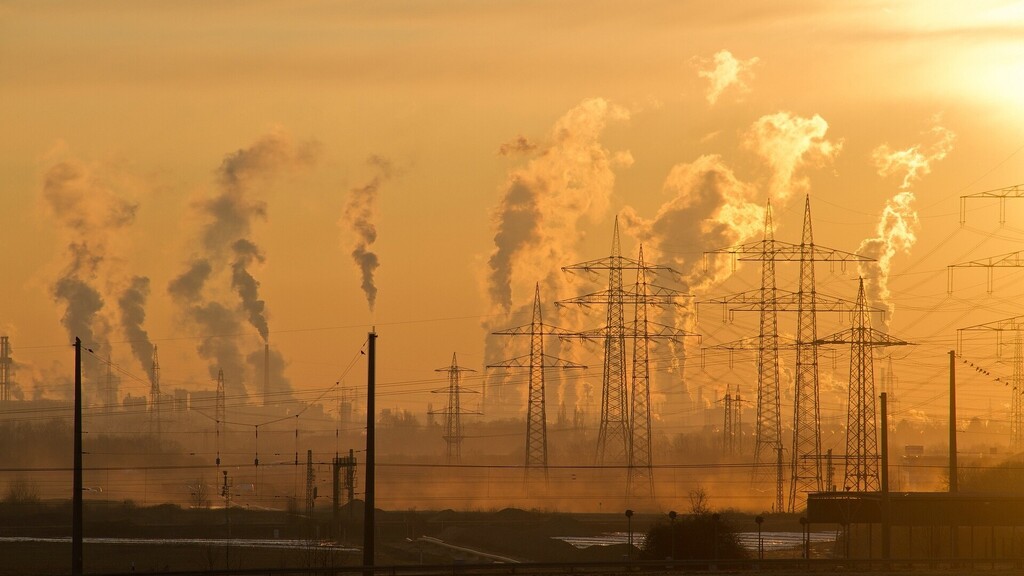

Pollution of nature and the environment can come in many forms and from many sources. Once released, many pollutants remain in nature and tend to accumulate. Some sources are widespread, such as pollution from transport and agriculture, while others are tied to a specific location, such as pollution from a factory or power plant. Chemicals, dust, noise and radiation are pollutants that can change the air, water and soil in ways that are harmful to our health and the environment. The fact is, pollution is a growing problem on a global scale and affects all aspects of daily life.
The main causes of air pollution are energy generation in thermal power stations, industrial production, energy consumption in buildings and transport. There is one piece of good news: air pollution emissions have decreased over the last two decades, resulting in better air quality. Despite this improvement, air pollution remains the biggest environmental health risk in Europe. Particulate matter and nitrogen dioxide levels above the World Health Organisation's recommendations caused an estimated 238,000 and 49,000 premature deaths respectively in 2020. Worldwide, there are around 6.5 million premature deaths per year. These pollutants are also linked to the occurrence of asthma, heart disease and strokes.
The most vulnerable members of society are particularly susceptible to the effects of air pollution. Lower socio-economic groups tend to be exposed to higher levels of air pollution, while the elderly, children and people with pre-existing health conditions are more vulnerable. It is estimated that air pollution causes over 1,200 deaths each year among people under the age of 18 in EU member states and co-operating countries.
The Earth's sensitive air envelope is being filled with emissions from industry, agriculture, transport, etc. At the same time, we are cutting down trees, sealing surfaces and thus disrupting the planet's natural heat exchange. The warming of the planet due to the increase in gases such as carbon dioxide, methane and others in the atmosphere is explained by the anthropogenic greenhouse effect. A distinction is made between the natural greenhouse effect, which has always taken place since the development of the earth's atmosphere and has made life on earth possible in the first place (without natural greenhouse gases, the global mean temperature would currently be around -15°C), and the additional anthropogenic greenhouse effect. In addition to the warming of the planet, weather extremes such as heat, drought and heavy rainfall continue to increase.
Nevertheless, there are measures we can take to help reduce air pollution. These include saving energy, efficient heating and, above all, choosing environmentally friendly modes of transport such as public transport or cycling.
Much of the pollution in our oceans occurs on land and not in the water. This includes sewage, rubbish and everything else that is thoughtlessly thrown into the sea. Other causes of pollution in the sea are oil spills resulting from accidents involving tankers or oil rigs, as well as residues from fish farming and fishing. As a result of this pollution, the food resources of around 3.5 billion people are at risk. This results in the extinction of fish species and seabirds as well as poisoned algae carpets. The latter also affect tourism, which is an important source of income in many coastal countries. There are now almost 500 so-called "dead zones" where life in the water is no longer possible. While we have only limited influence on tanker accidents or the methods used by the fishing industry, we can still do a lot to reduce marine pollution caused by plastic waste.
Agriculture continues to be an important user of water and a source of pollution. In 2017, it was responsible for 59% of total freshwater consumption in Europe. 22% of European surface waters and 28% of groundwater are significantly affected by diffuse pollution from agriculture, both from nutrients and pesticides. Groundwater provides 65% of drinking water and 25% of water for agricultural irrigation in the 27 EU Member States.
Between 2010 and 2021, industrial releases of pollutants harmful to human health and the environment into European waters have decreased overall. The release of heavy metals from mining decreased significantly, while emissions of nitrogen, which lead to eutrophication, decreased to a lesser extent. However, various pollutants such as mercury and microplastics continue to accumulate.
Soil is one of the most important components of land and plays a crucial role in nature's cycles, particularly in the water and nutrient cycles. Soil is the source of 90% of all food, feed, fibre and fuel produced in the EU - and it also provides valuable raw materials for horticulture and construction.
Even a small patch of soil is teeming with life, from tiny organisms to fungi and earthworms, all of which play an important role in the functioning of the soil ecosystem. This is also where nutrients are converted into forms that plants can absorb, creating biomass and storing carbon. This is also where the natural purification process of drinking water begins.
These natural processes are threatened by pollutants released by industry, transport and other economic activities. Unsustainable agricultural practices, fertilisers and pesticides also pollute the soil. This pollution ultimately affects plants, animals and human health. Soil degradation in the EU causes economic costs of more than 50 billion euros per year.
This is shown by the assessments of the European Environment Agency:
The main causes of soil pollution are faulty farming practices in conventional agriculture, improper waste management, nuclear waste, hazardous substances, inefficient irrigation and the extraction of mineral resources. The effects of soil pollution are obvious: lower agricultural yields and therefore less food for people. However, polluted soil also leads to toxins entering the food chain and making us sick. In addition, poisoned soil is one of the main reasons for bee mortality. To combat this type of environmental pollution
Sources:
Share now: